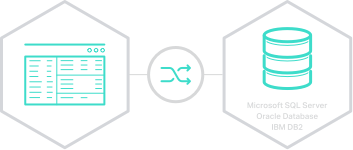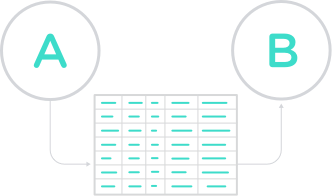Micro Focus Database Connectors™ are designed to simplify the transition from traditional COBOL data files to relational database management systems. Manually modifying COBOL source code to use SQL syntax is both time consuming and complex. Database Connectors solve this challenge by automatically translating the existing data file syntax within COBOL source code, into SQL instructions operating against a modern relational database. This approach removes the need for any application rewrite and delivers a bridge between RDBMS and COBOL applications—a proven approach to data modernization.
Database Connectors enable seamless translation of COBOL file I/O statements to SQL instructions operating against a modern relational database management system. Database Connectors support Microsoft SQL Server, Oracle, IBM DB2 and other RDBMS platforms.

Database Connectors use data dictionaries (also called eXtended File Descriptors (XFDs) which are based on standard COBOL file descriptors (FDs)) to map COBOL data items directly to database fields. XFDs are used at runtime to map records and fields onto database tables and columns. XFDs can be customized using Micro Focus COBOL compiler directives to give complete control over field naming and data type.

Database Connectors use low-level RDBMS APIs to achieve the best application performance. Where application data storage has moved from local data files to a networked RDBMS, applications may expect to see a small reduction in I-O performance. Such overheads can be addressed by updating performance critical sections of code to reduce access times.

Use standard tables and columns for COBOL data storage and enable easier data access using familiar tools such as Excel or Crystal Reports. Take advantage of real-time BI and data analytics.

Database Connectors improve application resiliency and recovery by leveraging the inherent benefits of RDBMS. Deliver higher levels of reliability, availability and scalability to your COBOL applications. Increase business continuity and accelerate data recovery during system failure.
